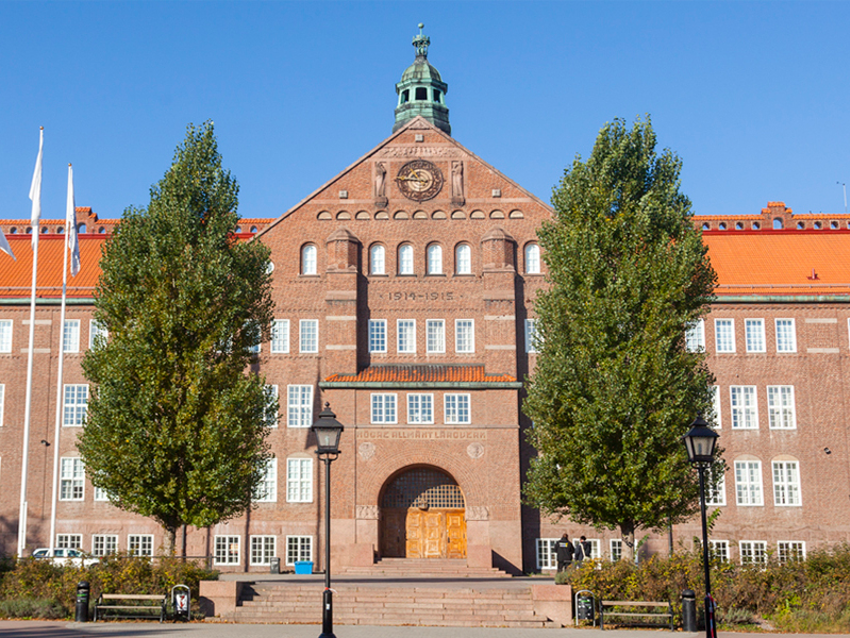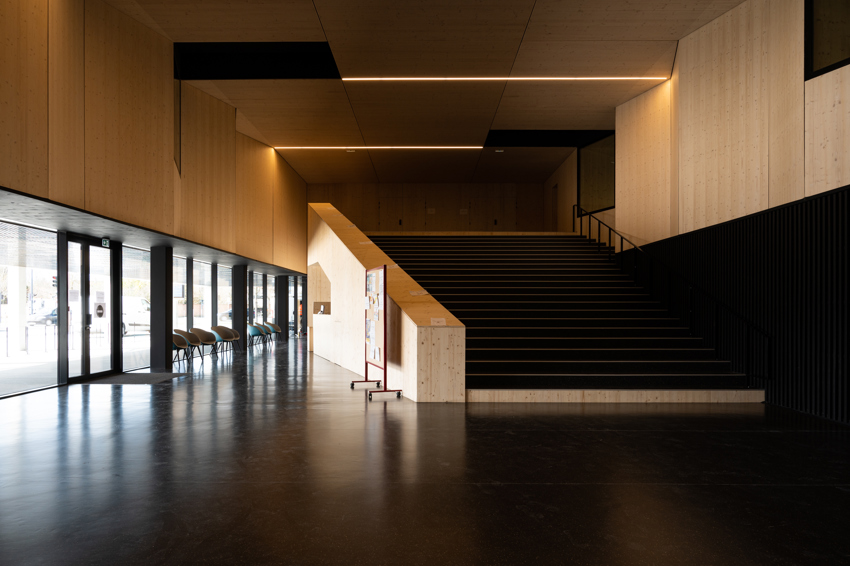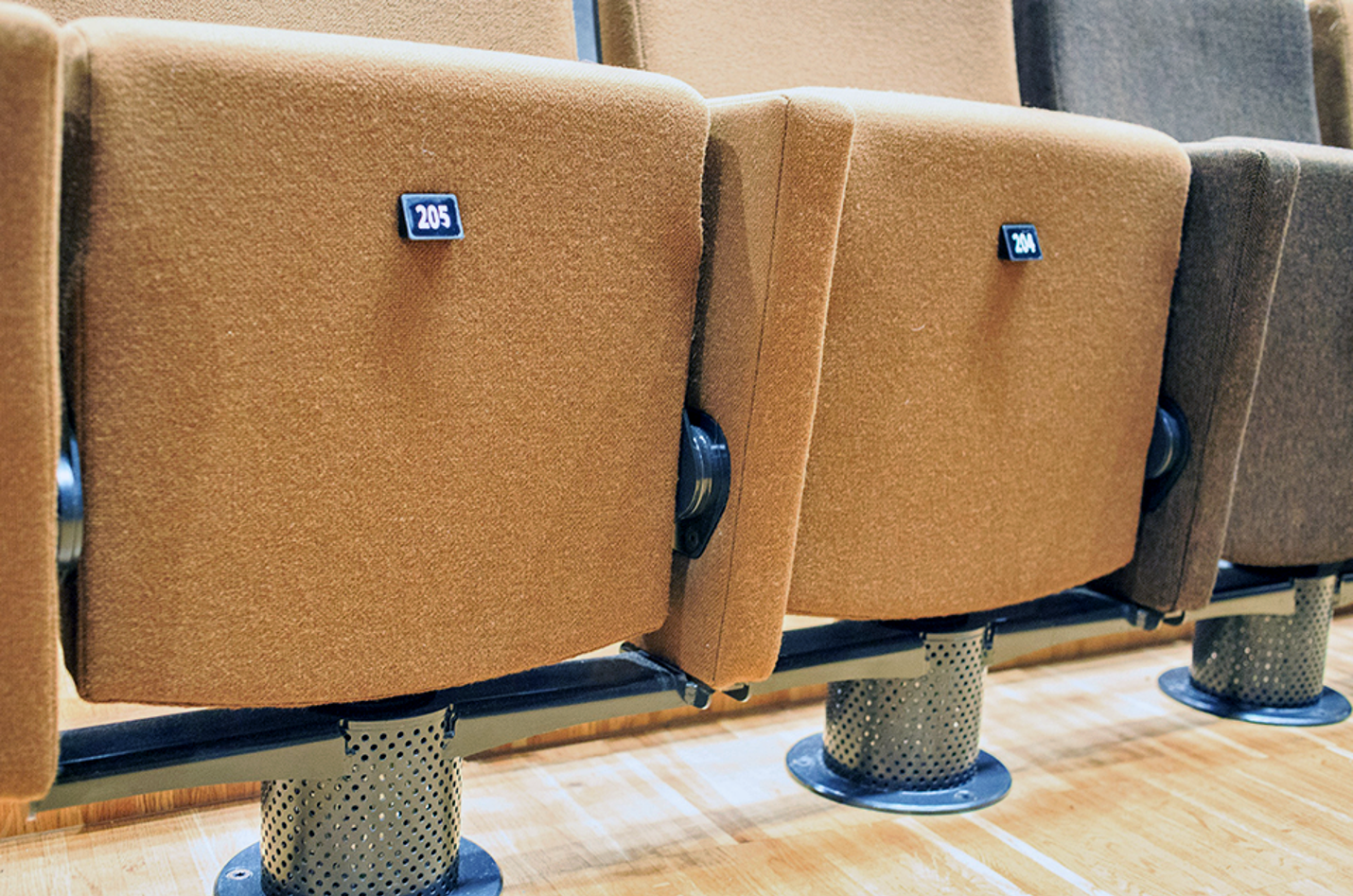What is indoor climate in a public building?
In nearly all other guides from us at Swegon, we focus on ventilation, heating and air conditioning (HVAC) in relation to health and comfort of the people inside buildings. We normally argue that, since people in the industrialised world spend nearly 90% of their lives indoors, it is important to make sure the indoor climate is healthy and that it supports peoples’ ability to perform and feel well. The time spent in the indoor environments exemplified and specified in this guide, concert halls and hospitals for instance, could possibly be seen as snap shots of a person’s life, and someone could therefore argue that these are of less importance when it comes to indoor climate.
We think not. First of all, these buildings are the daily workplaces for a lot of people and they deserve an indoor climate that enables them to pursue a good job at all times. Further, the ability to grasp a lot of information in a hospital or experience something that speaks to all senses in a museum, requires a good indoor climate too.
Learn more in our Indoor climate guide
Or contact us and let us tell you moreNot completely unlike an office or a hotel
These buildings can feature multiple stories of library balconies, numerous square meters of delicate art, magnificent concert halls or various care environments where the visitors are as delicate as the museums’ respected pieces. This guide will put the spotlight on these buildings’ special requirements, but they also feature offices throughout, and perhaps other indoor environments such as conference rooms, restaurants and kitchens.
In the below guides, we share deep knowledge about the latter mentioned applications, we give recommendations and we provide examples of different solutions. The information can be highly relevant in the pursuit to create a perfect indoor climate also in public buildings so don't miss out.
Go to our experts' thoughts on an indoor climate solution in a hotel
Worth knowing when it is an older building
To make firm comments in regards to the age or structure of public buildings in this guide is nearly impossible, but it is reasonable to touch upon the fact that it might be older buildings with certain restrictions in terms of change and renovation.
As an example, a building which is preserved for cultural reasons is likely to have restrictions in terms of exterior adjustments. To provide such building with air handling units, heat pumps or chillers on the roof top is simply not doable, the same goes for exterior duct work. Even the interior might cause limitations. First and foremost, very few older buildings are constructed with machine rooms or similar, to find a placement for modern ventilation can be hard. It might also be complicated to get the indoor climate products inside, older buildings can have narrow staircases, lack elevators, feature low ceilings and the attics can leave only tiny room. Further, an older robust construction can have 30-40 cm thick floors. With that, issues may arise in terms of water pipes for hydronic products or duct work coming through the building.

We explain indoor climate with examples
The indoor climate cannot be touched, or seen. It is a combination of several factors that we know a lot about, but which are hard to describe in words or numbers. To explain how important these factors are as well as the balance between them, we will exemplify the most apparent ones by looking at a few different kinds of public buildings.
Sound in a concert hall might be too obvious
Most will describe sound as incredible music, or associate it with something soothing, like the whirl of ocean waves. However, sound can also be unpleasant and disturbing and then be identified as noise. To eliminate disturbing sound is one of the most prominent requirements for concert halls and the like.
Concert halls are designed for the beautiful sound to be heard. Musicians practice and perform on these stages and to bring the best out of each player and instrument, the environment needs to be free from both draught and sound. Or more accurately, free from noise.
Learn more about concert halls here
Varying humidity levels – not for books or fine art
From an indoor climate perspective, it is far too often that humidity is considered negative and harmful. Worth to think about then, is that many can relate to chapped lips, soar hands and dry eyes which is a result of a too dry indoor climate, often caused by cold and dry outdoor conditions.
Believe it or not, but the fine art, historic findings and stuffed animals in museums or libraries are just as, or in fact even more, sensitive to changing humidity levels than humans are. Therefore, it is necessary to eliminate humidity fluctuations when designing and providing indoor climate solutions for museums and similar places.
Let us share our knowledge about museums and libraries
Design not to be seen
The above building types do not only face challenges in regards to creating a healthy and comfortable indoor climate, these buildings often have aesthetic requirements too. Customers can ask for building related technical equipment to be designed to disappear in the interior, as in the example of Malmö Live where we custom-built low-impulse air diffusers and fitted them underneath each seat. This made them disappear out of sight for the visitor. In Germany, at SXB in Berlin and Städel Museum in Frankfurt, our Swegon product brand, SLT, designed air diffusers to, in one place, stand out and in the other case, blend in. However, it is often not necessary to tailor products, most of our room units come in different shapes and many can be delivered in customised colours.

Hospitals have firm requirements on air quality and temperature
If someone asked what is the most important in terms of indoor climate in a hospital, many would probably answer “ventilation”. That is, for numerous reasons, absolutely right - it is vital to ventilate a hospital building in a way that minimises the risk of virus and bacteria to spread.
However, a hospital cannot be ventilated at full speed in all spaces. Examination rooms, offices, waiting rooms, care units and other parts of a hospital should offer an indoor climate that is productive for the people working in the premises, but which also offers a comfortable visit or stay for the patient.
More about hospitals and care rooms
Reference projects
As indicated in the introduction to this guide, the buildings in this section do not necessarily have a public ownership, the term is used as an umbrella to gather information about an entire range of different buildings. To be consequent and simplify the navigation on our website, we have therefore compiled our reference cases related to this guide under the same label, "Public buildings".

